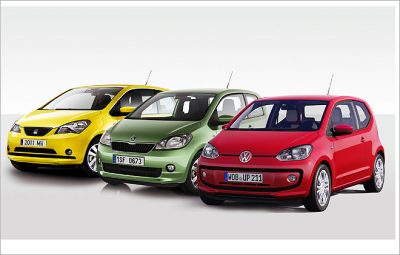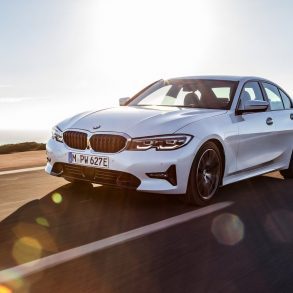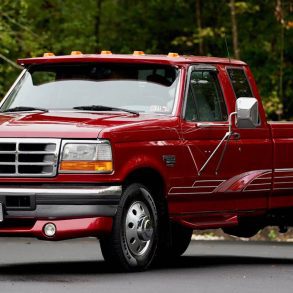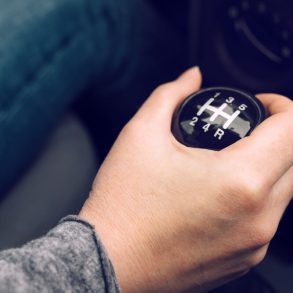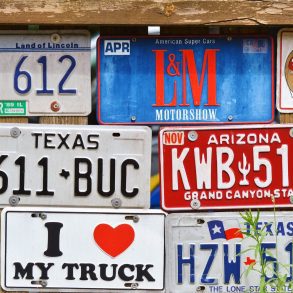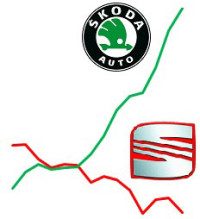 VW has been a stockholder of Seat since 1986 and full owner since 1990, with the Spanish brand supposedly being the sporty brand of the now 11-brand group. However, the model strategy did not always support this. And after sales peaked at over 520.000 units in 2000, the brand has seen sales drop to just over 300.000 units in 2009 and 2012, the lowest number since at least 1998. It’s sister brand Skoda meanwhile, has seen sales rise every year since 2002, passing Seat in 2005 and peaking in 2012 at almost 950.000 units, more than triple those of Seat. In 1999, Seat was ahead of Skoda by 134.000 units.
VW has been a stockholder of Seat since 1986 and full owner since 1990, with the Spanish brand supposedly being the sporty brand of the now 11-brand group. However, the model strategy did not always support this. And after sales peaked at over 520.000 units in 2000, the brand has seen sales drop to just over 300.000 units in 2009 and 2012, the lowest number since at least 1998. It’s sister brand Skoda meanwhile, has seen sales rise every year since 2002, passing Seat in 2005 and peaking in 2012 at almost 950.000 units, more than triple those of Seat. In 1999, Seat was ahead of Skoda by 134.000 units.
With VW Group boss Ferdinand Piech openly courting Alfa Romeo, another troubled Mediterranean sporty brand, the future of Seat seems to hang by a thread, even though Fiat CEO Sergio Marchionne has taken every opportunity to deny Alfa Romeo is for sale or will be in the near future. But what if struggling Fiat needs some of those billions of Euros in VW Groups war chest to buy the remaining stake of Chrysler or just to pay off some of its huge debt? With Alfa Romeo in the hands of the Germans, what value would Seat hold in the Group’s brand portfolio? Especially with the brand reporting operating losses since 2008, adding up to over € 1 billion.
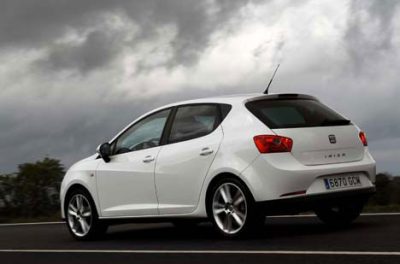 Seat is heavily dependent on just one model, with Ibiza representing around 50% of total brand production and with 155.000 units in 2012 Seat’s only model above the 100.000 mark. This leaves the brand very vulnerable to fluctuations when this model gets near the end of its product life cycle. For example, the 35.000 unit drop in Ibiza sales from 2011 to 2012 was not even fully covered by the 25.000 sales of the newly introduced Mii, a sub-10.000 euro minicar with only small profit margins. In comparison, Skoda built over 400.000 Octavia, over 250.000 Fabia and over 100.000 Superb in 2012, with Yeti production coming close to the mark at almost 91.000 units produced.
Seat is heavily dependent on just one model, with Ibiza representing around 50% of total brand production and with 155.000 units in 2012 Seat’s only model above the 100.000 mark. This leaves the brand very vulnerable to fluctuations when this model gets near the end of its product life cycle. For example, the 35.000 unit drop in Ibiza sales from 2011 to 2012 was not even fully covered by the 25.000 sales of the newly introduced Mii, a sub-10.000 euro minicar with only small profit margins. In comparison, Skoda built over 400.000 Octavia, over 250.000 Fabia and over 100.000 Superb in 2012, with Yeti production coming close to the mark at almost 91.000 units produced.
The Spanish brand markets itself with the tagline Enjoyneering: the best of German thorough engineering and Spanish emotional design. However, Ibiza and Leon are currently the only Seat models with a design that sets them apart from other vehicles in the VW Group line-up, with Altea and Altea XL in runout mode without a replacement. All other models are just Skoda (Mii, Toledo), VW (Alhambra) or Audi (Exeo) models with a nose job and a Seat logo. How can a brand be taken seriously when one of their core values is design, but all they do is slap another nose on an existing car?
While sister brand Skoda has been expanding outside of Europe, most importantly to China, now the brand’s biggest market with 235.000 sales in 2012, Russia (99.000 sales), and India (over 34.000 sales), Seat is still heavily dependent on (Western) Europe, with Mexico the brand’s biggest “export” market at 21.000 sales in 2012, followed by the North African Mediterranean countries at a combined 19.000 sales, and the Middle East with almost 13.000 sales. In some of the world’s largest and fastest growing markets, China and Russia, Seat is only a bit player with 3.000 and 2.500 sales respectively in 2012. The brand is not represented in India or Brazil. Especially the latter, the fourth largest car market in the world, could have been a huge opportunity for Seat. Fiat, another Latin brand, holds over 21% of the Brazilian market, so Seat’s Spanish roots should hold some marketing value. Moreover, VW Group already has a huge distribution channel in the country, as the German brand has a market share close to 20%, selling almost 770.000 vehicles in 2012. That’s 2,5 times as many as Seat’s worldwide sales in the same year.
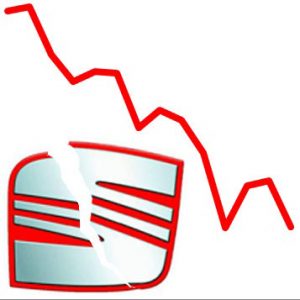
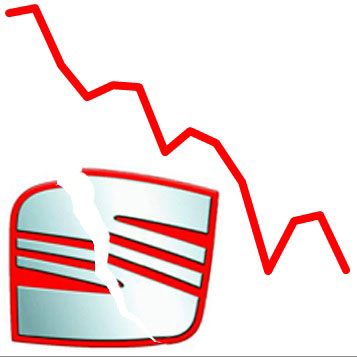 With Seat aspiring to be the VW group’s sporty brand, I don’t understand what a big family MPV (Alhambra) is doing in their showrooms. Shouldn’t this have been a Skoda vehicle? It would fit perfectly into the Czech brand’s line-up of value-for-money family vehicles ranging from Fabia Wagon, Roomster, Yeti, Octavia Wagon to Superb Wagon. In the meantime, the Seat Toledo’s sibling Skoda Rapid, will get a somewhat more sporty hatchback version, called Rapid Spaceback. This could have been a nice addition to Seat’s line-up as well, but I suppose VW Group management decided that the Skoda brand with its more global outreach, will have better sales projections than the same vehicle as a Seat. This is an indicator that even VW Group management considers Skoda a stronger brand, and worth investing in, while Seat spinning into a vicious cycle of decreased investment into new stand-alone products and decreasing brand value.
With Seat aspiring to be the VW group’s sporty brand, I don’t understand what a big family MPV (Alhambra) is doing in their showrooms. Shouldn’t this have been a Skoda vehicle? It would fit perfectly into the Czech brand’s line-up of value-for-money family vehicles ranging from Fabia Wagon, Roomster, Yeti, Octavia Wagon to Superb Wagon. In the meantime, the Seat Toledo’s sibling Skoda Rapid, will get a somewhat more sporty hatchback version, called Rapid Spaceback. This could have been a nice addition to Seat’s line-up as well, but I suppose VW Group management decided that the Skoda brand with its more global outreach, will have better sales projections than the same vehicle as a Seat. This is an indicator that even VW Group management considers Skoda a stronger brand, and worth investing in, while Seat spinning into a vicious cycle of decreased investment into new stand-alone products and decreasing brand value.
This leads me to my final point: how well are those rebadged Seats selling, compared to their Skoda or VW counterparts, since this shows the true added value that a brand could offer. I don’t think comparing Ibiza to Polo and Fabia or comparing Leon to Golf has the same value in predicting brand strength. But the following cars look 90% identical, with just their own front-end design and different tail lights.
Minicars 2012:
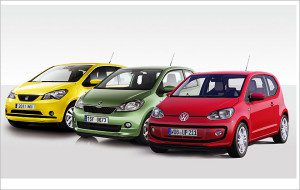
MPV 2012:
- VW Sharan 48.399
- Seat Alhambra 19.393
Small sedan 2012 (which was the year of their introduction):
- Skoda Rapid 8.292
- Seat Toledo 3.550
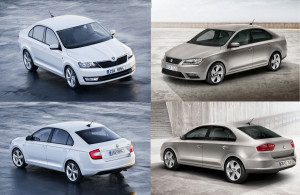
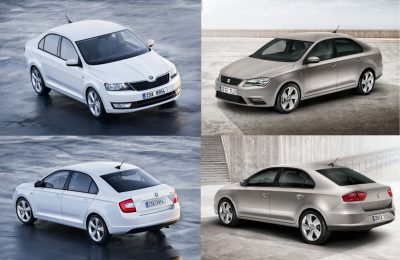 Jan-Sept 2013 European sales of Rapid and Toledo show 24.349 Rapid sales vs. 10.828 Toledo sales, as similar ratio. Natural exceptions to this trend are their home markets: Spain is the only country where Toledo outsells Rapid: 3900 vs. 1184 units, while in Czech Republic Rapid outsells Toledo 6008 vs. 292 units.
Jan-Sept 2013 European sales of Rapid and Toledo show 24.349 Rapid sales vs. 10.828 Toledo sales, as similar ratio. Natural exceptions to this trend are their home markets: Spain is the only country where Toledo outsells Rapid: 3900 vs. 1184 units, while in Czech Republic Rapid outsells Toledo 6008 vs. 292 units.
It shouldn’t come as a surprise that the VW brand is much stronger than Seat, but these numbers indicate that even sister brand Skoda is clearly outselling both identical “Spanish” vehicles, ranking the brand Skoda as stronger and more valuable than the brand Seat.
VW should stop chasing after Alfa Romeo and start investing in their forgotten stepchild again. Seat’s value to a third party is limited, since the brand is interwoven into the VW Group, with technology and even some production shared with other VW brands. Seat has no brand legacy to pride itself with, existing only since 1950 and having produced rebadged Fiat vehicles at first, and rebadged VW Group vehicles later on. Retiring the brand like GM has done with Oldsmobile, Pontiac and Saturn lately will prove a very expensive option, not to mention what it would do to the image of the never-ending success story of VW Group.
And moreover, on their way to beat Toyota and GM to the world’s biggest carmaker and the first to reach 10 million annual sales, VW Group desperately needs those 300.000 Seat sales. Or more, if they would invest in new stand-alone vehicles and develop a global growth strategy, just like they have for their other brands VW, Audi, Porsche and Skoda. Did I hear someone mention Brazil?

